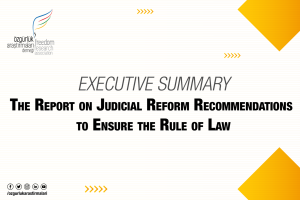How would you feel if I told you that, in the days before the internet fit in our pockets—when it glowed from a desktop tower onto a CRT monitor stayed in a corner of the house—there were nano-scale social-media platforms you actually logged into and out of?
I am going to get into a little nostalgia and a little analogy here. In the era when social relations did not take place online, extended families had houses of certain elders where everyone gathered. Especially during religious holidays or special moments like after wedding parties, people would meet there, chat at length, and eat and drink. In our family, that place was my great-aunt’s house—the aunt of my father, with who’s children he grew up like siblings. Whenever we had the chance, we went there, aiming for the longest evening visits of the holidays to meet with as many people as possible at her home. That house turned into a proto-social-media platform: men on the balcony debating politics, women in the kitchen discussing their own agenda, young people in a small room talking football. Sometimes someone tired of politics would slip into the football room—moving, in other words, between different spaces much like today’s Spaces on X. It might not have been the nicest or largest house in the extended family, yet it became the social medium where everybody assembled—bounded by time and place and therefore limited in capacity, unable to grow beyond its nano scale.
This is precisely where we must speak of the affordances of digital social-media platforms. Today these venues are independent of time and space, enabling everyone on earth to gather in the same “house,” move into any room they like, and roam freely between rooms. Although it may sound tautological, everyone can literally gather where everyone gathers.
Whenever I give speeches touching on free markets, monopolization, or antitrust, the inevitable first question is why social-media companies form monopolies and why the market cannot solve this problem. In response, I pose a question of my own: suppose we heard an explosion loud enough to rattle the windows in this very room—what would you do first? Almost everyone answers, as you probably just did, “I’d check Twitter on my phone,” and the fact that the name X hasn’t fully caught on yet nicely sums up how tightly people cling to these platforms.
Social-media channels are not detached from, nor have they transcended, humanity’s age-old dynamic of socializing and communicating. Indeed, we could widen the equation to include Amazon’s retail infrastructure, Google’s search engine, and other digital monopolies. People have always tried to reach the widest possible audience; even if they do not contact everyone, they want the pool of potential contacts to be as large as possible. Long ago, one of the main motives for migrating from villages to cities was parents’ desire to provide more options for their children—often the same few top choices over and over. With digitization the constraints of time, space, and, most importantly, scarcity have been overcome. Now anyone can shop via the most efficient infrastructure or use the optimal search engine. Freed from the chains of time and space, any digital platform—media, communication, retail, or whatever you can imagine—is, by its very nature, destined to become a monopoly.
At this point we need to pause and examine competition in a free market. People sometimes misunderstand: competition does not mean mortal enemies trying to annihilate one another. Actors in a marketplace look for better, more efficient, cheaper, higher-quality offerings; those who succeed are rewarded by consumers, while the rest must reposition themselves. Perhaps a firm is not the highest-quality option but offers a lower price; perhaps its product does not last long but appeals to users who want quick consumption. Another point to stress is that even potential actors—who do not yet exist but are theoretically possible—are already competing with established companies. Without state backing, it is extremely hard for any company, especially in digital services, to monopolize and create an order that harms consumers.
My back-to-back presentation of two seemingly contradictory arguments is meant to analyze digital monopolies within market conditions yet on their own terms. The aim is to view this new and special situation from a different angle and to emphasize the need for regulations tailored accordingly. Our equation looks like this: in every domain we will end up with one dominant social-media channel. Today, for instance, X for breaking news, Instagram for consumer frenzy, YouTube for video, Spotify for music—and, of course, the companies that own these platforms. These monopolies are now more powerful than states; you might meet a dissident who escaped North Korea, but it is far less likely you will encounter a commentator who was banned by YouTube yet still sets the agenda. However, these platforms will not remain monopolies forever; others will replace them. In other words, a new platform that everyone uses to communicate with everyone will always emerge; its name may differ from today’s, but its function, market position, and monopoly status will be the same.
How, then, do we regulate natural monopolies? The moment social-media venues that monopolize the right to information enter the picture, state-run platforms, viewed from a libertarian perspective, cannot be defended as the solution. Different countries with different social and political cultures propose various fixes, yet no universally accepted approach has emerged. Just as the images we saw on private television channels that entered our lives in the 1990s now seem unimaginable—and that no longer bothers us—so too will we eventually find a way for digital platforms. Our task, as libertarians, is to ensure that the solution is built as closely as possible to our ideal direction.
* Özgür Özer





